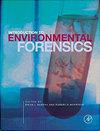用液相柱硝酸银和气相色谱法定量测定原油和含油沉积物中合成基钻井泥浆烯烃
IF 1.2
4区 环境科学与生态学
Q4 ENVIRONMENTAL SCIENCES
引用次数: 1
摘要
本文章由计算机程序翻译,如有差异,请以英文原文为准。
Quantification of synthetic-based drilling mud olefins in crude oil and oiled sediment by liquid column silver nitrate and gas chromatography
Abstract Synthetic-based drilling muds (SBMs) are complex mixtures of man-made fluids used during the drilling of oil and gas wells. SBM-derived chemicals can enter the environment through failed wells and routine or poor disposal practices, where they can persist and thereby warrant measurement. SBMs are commonly formulated with linear and methyl branched α- and internal-olefins mostly in the C14 to C20 carbon range, which are not native to crude oils. Thus, SBM-derived olefins can provide a basis to recognize the impact of these drilling wastes in the environment. However, the presence of abundant native hydrocarbons in oils and sediments can hinder the detection of trace level SBM-derived olefins by conventional organic sample preparation and analytical methods. Silver ion chromatography using silver nitrate (AgNO3) impregnated silica gel can serve to physically separate olefins from saturated aliphatic hydrocarbons native in crude oils, which can subsequently be analyzed and measured by conventional one-dimensional gas chromatography-flame ionization detection (GC-FID). In this study, SBM-derived olefins are measured in crude oils from the Deepwater Horizon oil spill and in their laboratory mixtures to a detection limit of approximately 5000 µg/g (0.5 wt%). In oiled sediment, SBM-derived olefins were reliably detected at concentrations as low as 1 µg/g-dry. An application of this method is demonstrated through analysis of crude oils and oil-contaminated seafloor sediment from the Taylor Energy oil spill site in the northern Gulf of Mexico where SBM was historically used and discharged.
求助全文
通过发布文献求助,成功后即可免费获取论文全文。
去求助
来源期刊

Environmental Forensics
环境科学-环境科学
CiteScore
4.90
自引率
5.60%
发文量
23
审稿时长
3 months
期刊介绍:
Environmental Forensics provides a forum for scientific investigations that address environment contamination, its sources, and the historical reconstruction of its release into the environment. The context for investigations that form the published papers in the journal are often subjects to regulatory or legal proceedings, public scrutiny, and debate. In all contexts, rigorous scientific underpinnings guide the subject investigations.
Specifically, the journal is an international, quarterly, peer-reviewed publication offering scientific studies that explore or are relevant to the source, age, fate, transport, as well as human health and ecological effects of environmental contamination. Journal subject matter encompasses all aspects of contamination mentioned above within the environmental media of air, water, soil, sediments and biota. Data evaluation and analysis approaches are highlighted as well including multivariate statistical methods. Journal focus is on scientific and technical information, data, and critical analysis in the following areas:
-Contaminant Fingerprinting for source identification and/or age-dating, including (but not limited to) chemical, isotopic, chiral, mineralogical/microscopy techniques, DNA and tree-ring fingerprinting
-Specific Evaluative Techniques for source identification and/or age-dating including (but not limited to) historical document and aerial photography review, signature chemicals, atmospheric tracers and markets forensics, background concentration evaluations.
-Statistical Evaluation, Contaminant Modeling and Data Visualization
-Vapor Intrusion including delineating the source and background values of indoor air contamination
-Integrated Case Studies, employing environmental fate techniques
-Legal Considerations, including strategic considerations for environmental fate in litigation and arbitration, and regulatory statutes and actions
 求助内容:
求助内容: 应助结果提醒方式:
应助结果提醒方式:


